
THE HERD was agitated: ears were flapping, raised heads were swinging one way and then the other, and dust was swirling around stomping feet.
We had seen what an angry elephant can do to a Hilux a few years back in Kruger National Park, so we pulled to a halt on the narrow track. You need to treat elephants with a huge degree of respect, and keeping one’s distance is a good start. Rob, our mate who was driving, slipped the Hilux into reverse, preparing for a hasty retreat.
Slowly the herd began to move away from the water, their thirst satiated, but they were in no hurry to clear the track. The matriarch still watched us intently, ears wide, trunk uplifted, all the while making sure her brood was safe and happy and working their way into the sanctuary of the thick mopane scrub. As we edged along the track most of the herd had vanished into the thick bush. Heart rates slowly came back to normal as we continued on the sandy road.
 We were on a side track around a flooded section of dirt road near the town of Maun, south of the Mababe Gate of the Chobe National Park, heading to the tourist outpost and gateway to the famed Okavango Delta. The annual flood of the Delta was occurring and tendrils of water were pushing through the parched land and across the main track, hence our detour. With the water came mobs of wild animals looking for fresh food or easy prey. This was life and death in the African bush, as it has always been.
We were on a side track around a flooded section of dirt road near the town of Maun, south of the Mababe Gate of the Chobe National Park, heading to the tourist outpost and gateway to the famed Okavango Delta. The annual flood of the Delta was occurring and tendrils of water were pushing through the parched land and across the main track, hence our detour. With the water came mobs of wild animals looking for fresh food or easy prey. This was life and death in the African bush, as it has always been.
Our trip – a family sabbatical organised by our son – began two weeks earlier at the luxury Swala Camp in a remote section of the elephant-loaded Tarangire National Park in northern Tanzania. We did the tourist thing for the next week, taking in the incredibly varied extravaganza of wildlife in the Ngorongoro Crater and the delights of Giraffe Manor in Nairobi, before flying south to Victoria Falls and the Sussi & Chuma camp on the banks of the Zambezi.

We stopped in this remote area for a couple of days, savouring a place where few travellers pull up for more than a brief rest or, at most, an overnight stop. There were encounters with elephants, hippos and more. With no other tourists to crowd us, the girls spent an hour with a young leopard that lingered just metres from their car.
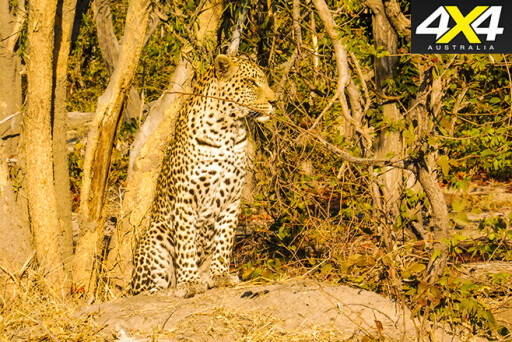 We had earlier split into ‘boys’ and ‘girls’ vehicles for the day and told them not to follow us; they were elated and told us endlessly about the magnificent, usually elusive beast which we had missed completely. Such are the vagaries of wildlife watching.
We had earlier split into ‘boys’ and ‘girls’ vehicles for the day and told them not to follow us; they were elated and told us endlessly about the magnificent, usually elusive beast which we had missed completely. Such are the vagaries of wildlife watching.
Access into the Okavango when the flood is pushing deep into the desert is by plane and boat, with road and track access extremely limited. However, once you’re on an island in the Delta, as we were after a 20-minute flight, movement was possible only in modified Cruisers running 9x16-inch tyres on split rims.
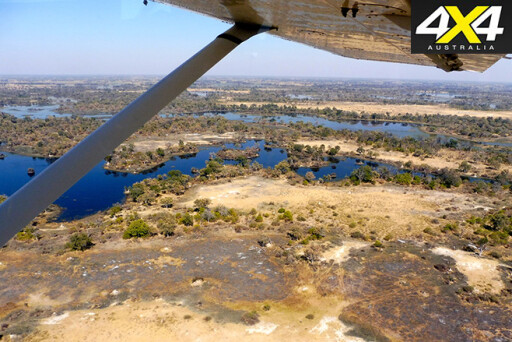 At times we ploughed through water for kilometres, and it’s no wonder the service schedule on these hard-working rigs – more like boats than trucks – is extreme, with oil changes and greasing of wheel bearings needed every couple of weeks. Every year after the tourist season, the running gear is totally rebuilt.
At times we ploughed through water for kilometres, and it’s no wonder the service schedule on these hard-working rigs – more like boats than trucks – is extreme, with oil changes and greasing of wheel bearings needed every couple of weeks. Every year after the tourist season, the running gear is totally rebuilt.
We stayed at the luxurious Baines’ Camp (named after Thomas Baines, the artist who also painted in Australia when he was a member of the 1855 A.C Gregory Expedition across the top of the continent) and the little less extravagant Stanley’s Camp, savouring the incredible experience of this watery wonderland, which is often described as ‘Africa’s last Eden’.
 While wildlife is plentiful, we’ve found after four trips to the Delta (not all as luxurious as this one) that the wildlife isn’t as easy to find or see as, say, in Chobe.
While wildlife is plentiful, we’ve found after four trips to the Delta (not all as luxurious as this one) that the wildlife isn’t as easy to find or see as, say, in Chobe.
Back at Maun after our Delta adventure we said goodbye to half our group. They were heading for Johannesburg and flights home while four of us slipped into the Hilux for a three-week journey through Namibia. This was to be a low-key affair, with a mix of accommodation and camping in places as diverse as national parks, local hotels, game farms, private reserves and guesthouses.
Why such eclectic accommodation? On tag-along trips we ran in Africa a few years ago, travellers loved both the variety and the chance to meet other travellers, as well as local farmers and workers, all of whom provided different insights into life in Africa.
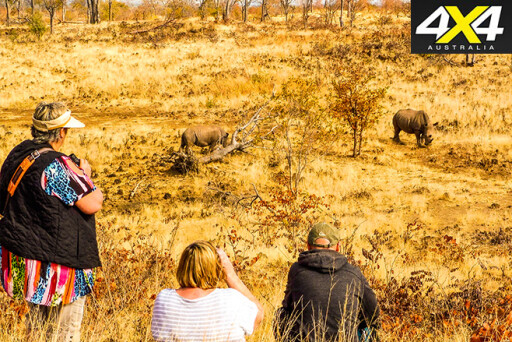 We spent a couple of days in Etosha National Park, one of the great parks of Africa, in the desert of the country’s north. A vast pan – similar to Lake Eyre, although a bit smaller – forms the heart of the reserve, but around it ebbs and flows an incredible amount of wildlife wandering from one waterhole to another. Small herds of elephant, many groups of giraffe, sprightly antelopes and gazelles, zebra, warthogs and, if you’re lucky, black and white rhino.
We spent a couple of days in Etosha National Park, one of the great parks of Africa, in the desert of the country’s north. A vast pan – similar to Lake Eyre, although a bit smaller – forms the heart of the reserve, but around it ebbs and flows an incredible amount of wildlife wandering from one waterhole to another. Small herds of elephant, many groups of giraffe, sprightly antelopes and gazelles, zebra, warthogs and, if you’re lucky, black and white rhino.
Of course, predators are there too, from jackals that show no fear of lions, to delightful bat-eared foxes, snappy mongooses, timid cheetahs and, surprisingly, a large number of leopards.
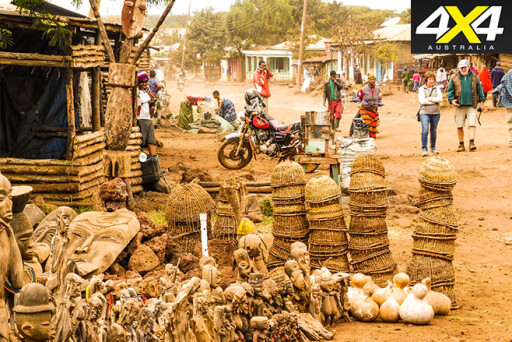 From Etosha our route took us through the dry desert country of the Himba people, traditional cattle herders who were having a hard time because of the drought that gripped the country.
From Etosha our route took us through the dry desert country of the Himba people, traditional cattle herders who were having a hard time because of the drought that gripped the country.
The towns are magnets for a mix of cultures and people, the most striking being the semi-naked Himba and the immaculately groomed Herero women who stand out in the finery of their full-length dresses and wide, cow-horn-style headgear.
We slipped through the Namibian tourist enclave of Swakopmund, a coastal town rich in colonial German heritage. The town, cooled by the South Atlantic Benguela Current, offers fine restaurants, beachside delights and a reprieve from the heat that dominates much of Namibia.
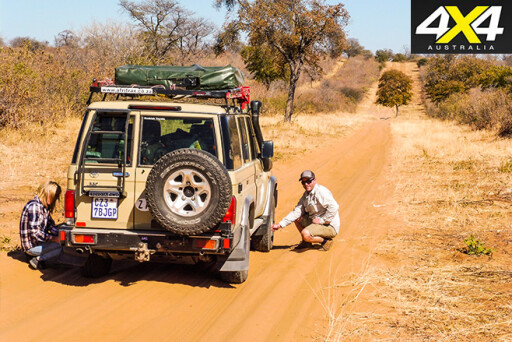 From here we headed south through desert country that grew drier with every passing mile, and we crossed the Tropic of Capricorn. Then the country began to change with short, wiry grass covering the rolling plains, and we started seeing gemsbok, springbok and zebra, even though we were far from any reserves or protected area.
From here we headed south through desert country that grew drier with every passing mile, and we crossed the Tropic of Capricorn. Then the country began to change with short, wiry grass covering the rolling plains, and we started seeing gemsbok, springbok and zebra, even though we were far from any reserves or protected area.
We stopped at the small village of Solitaire, just a scattering of buildings around the roadhouse and bakery. It didn’t offer customers much in the way of choice, but the coffee wasn’t half bad.
Next morning we entered the vast Namib-Naukluft National Park, which covers more than 50,000km² and is known for the Sossusvlei Dunes, some of which are among the world’s tallest, towering more than 300 metres above the sand plain that surrounds them. It was early morning, the sun had just come up behind us and white clouds hung amongst those red-sand giants.
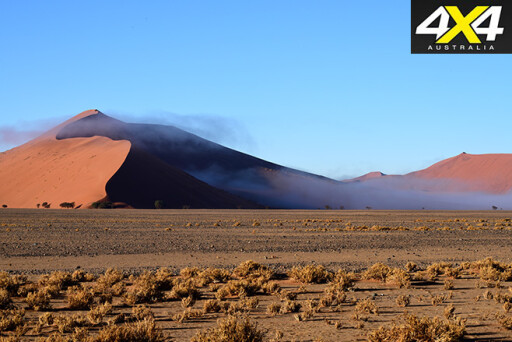 A spectacular and somewhat eerie sight, it was one we had never seen before. Feeling over-energetic, we climbed up Dune 45, a baby of just 85 metres. The ascent left us hot and panting in the cool, mist-laden air, but the effort was worth it, the view from the dune’s sharp-edged crest magnificent.
A spectacular and somewhat eerie sight, it was one we had never seen before. Feeling over-energetic, we climbed up Dune 45, a baby of just 85 metres. The ascent left us hot and panting in the cool, mist-laden air, but the effort was worth it, the view from the dune’s sharp-edged crest magnificent.
The road continues deeper into the dune field, ending at a car park. From there most people take a short walk to Sossusvlei (a small ‘pan’ or dry salt lake surrounded by big dunes), or do the strenuous climb to the top of ‘Big Daddy’; at 325 metres it’s one of the biggest dunes in the area... but not the biggest. That accolade goes to Dune 7, which at 388 metres above the plain makes our Big Red on the edge of the Simpson look pretty small.
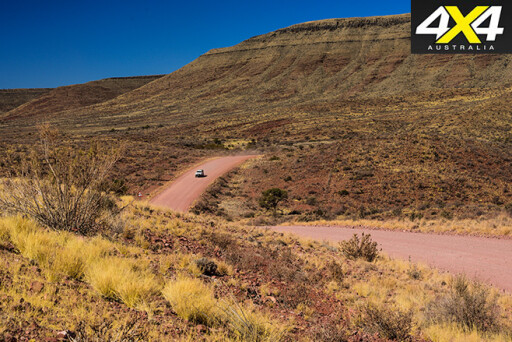 Over the next two days we headed west, stopping at some great pubs in small towns before crossing the border into South Africa and taking in the Kgalagadi Transfrontier Park which straddles the border of Botswana and South Africa. This park is well-known for its cheetahs, but luck was not with us – we saw plenty of desert animals and lions, but the fast, spotted cats eluded us.
Over the next two days we headed west, stopping at some great pubs in small towns before crossing the border into South Africa and taking in the Kgalagadi Transfrontier Park which straddles the border of Botswana and South Africa. This park is well-known for its cheetahs, but luck was not with us – we saw plenty of desert animals and lions, but the fast, spotted cats eluded us.
 After more than a dozen trips to Africa, including a 10-month trek from the southernmost tip to the northern extremity of this great continent, we knew we’d be back – we simply can’t stay away. Whatever you do, go to Africa at least once. You’ll probably feel the same!
After more than a dozen trips to Africa, including a 10-month trek from the southernmost tip to the northern extremity of this great continent, we knew we’d be back – we simply can’t stay away. Whatever you do, go to Africa at least once. You’ll probably feel the same!
TRAVEL PLANNER
SELF-DRIVE
Explore South Africa, Botswana, Namibia, Zambia, and the Kingdoms of Lesotho and Swaziland.
If you’re going for less than three months it’s more economical to hire a fully set-up 4WD. We use Afritrax 4x4 Offroad rentals (www.afritrax.co.za). They also supply a full complement of camping gear, plus they suggest itineraries and can provide a driver.

Start your trip in Jo’burg by staying at the Farm Inn on the outskirts of Pretoria. It’s close to Afritrax headquarters.
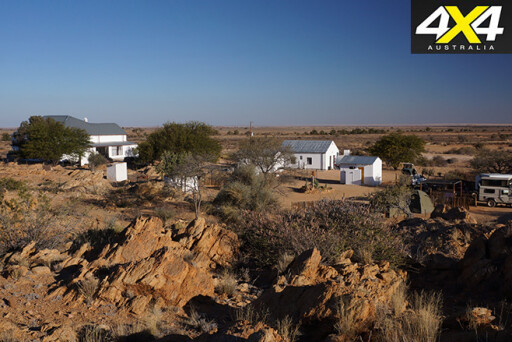 For exclusive luxury stays, check out Sanctuary Retreats.
For exclusive luxury stays, check out Sanctuary Retreats.
For camping info on Kruger National Park and all the other parks in South Africa, visit South African National Parks.
For info on Namibia, visit Travel Namibia.
To start your Botswana adventure, check out Botswana Tourism.

COMMENTS